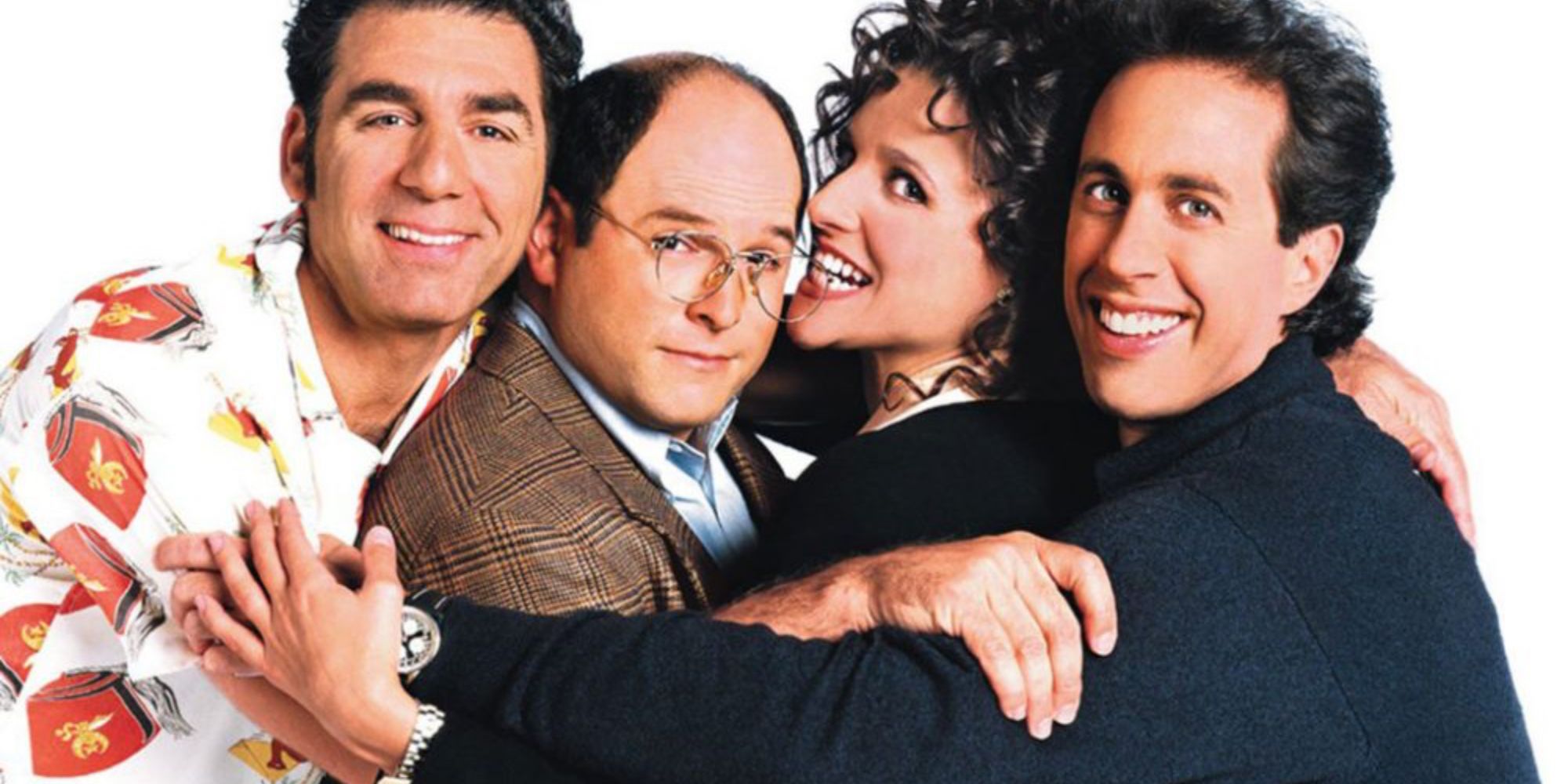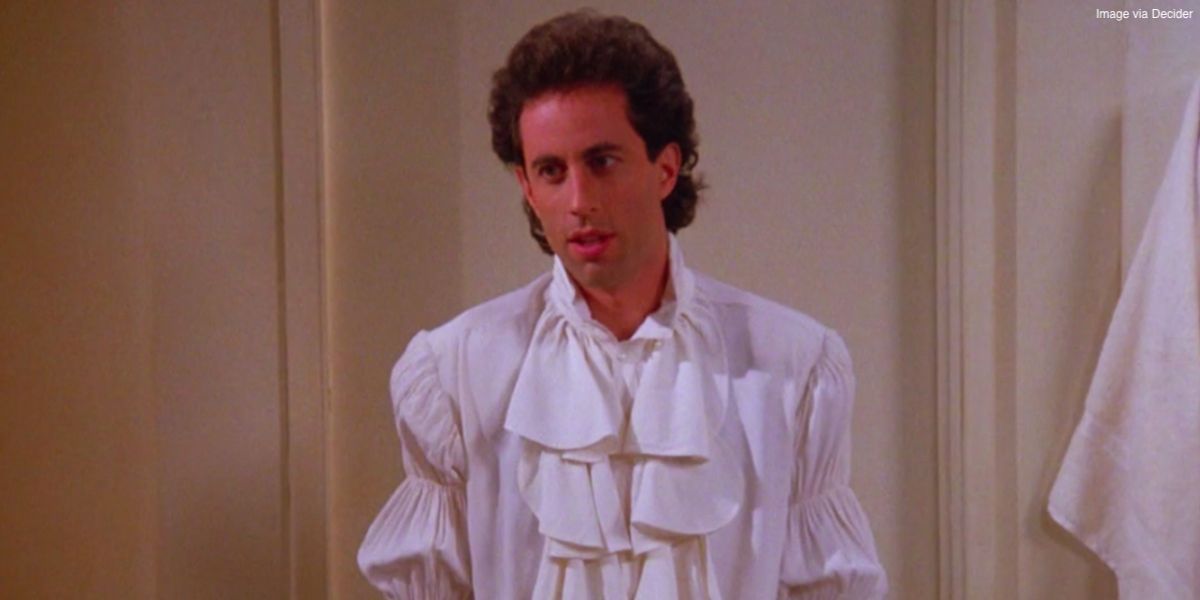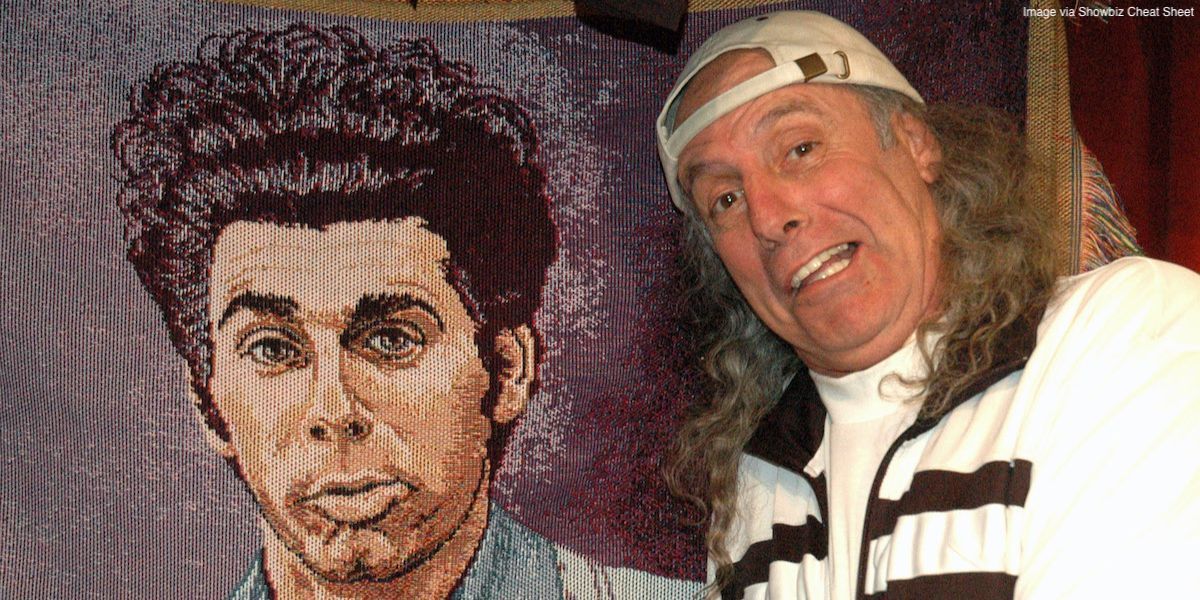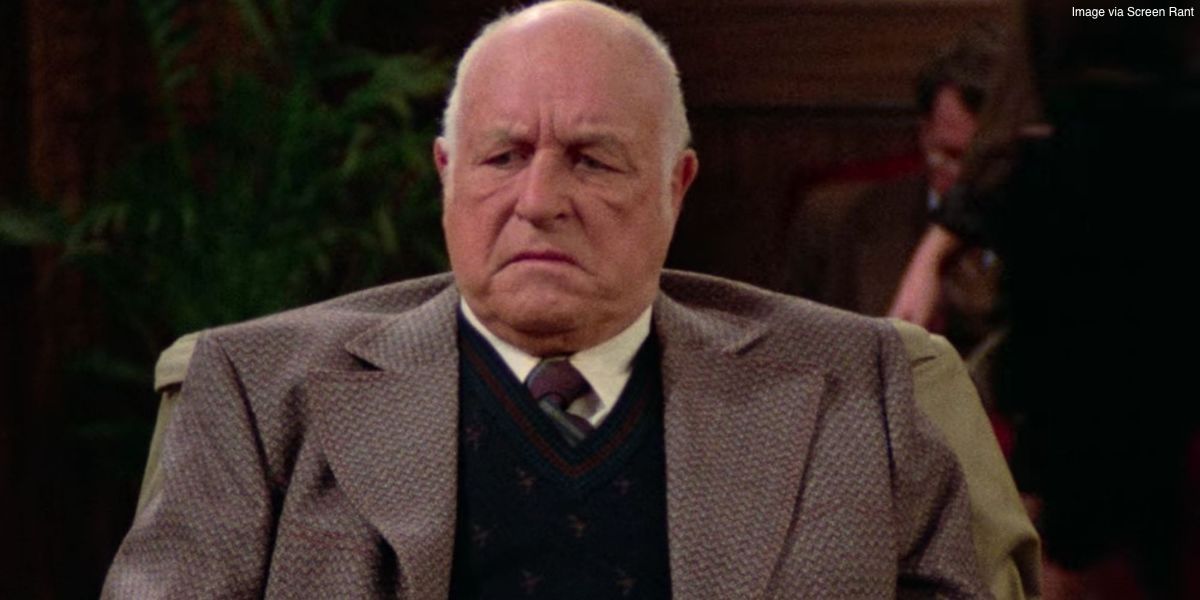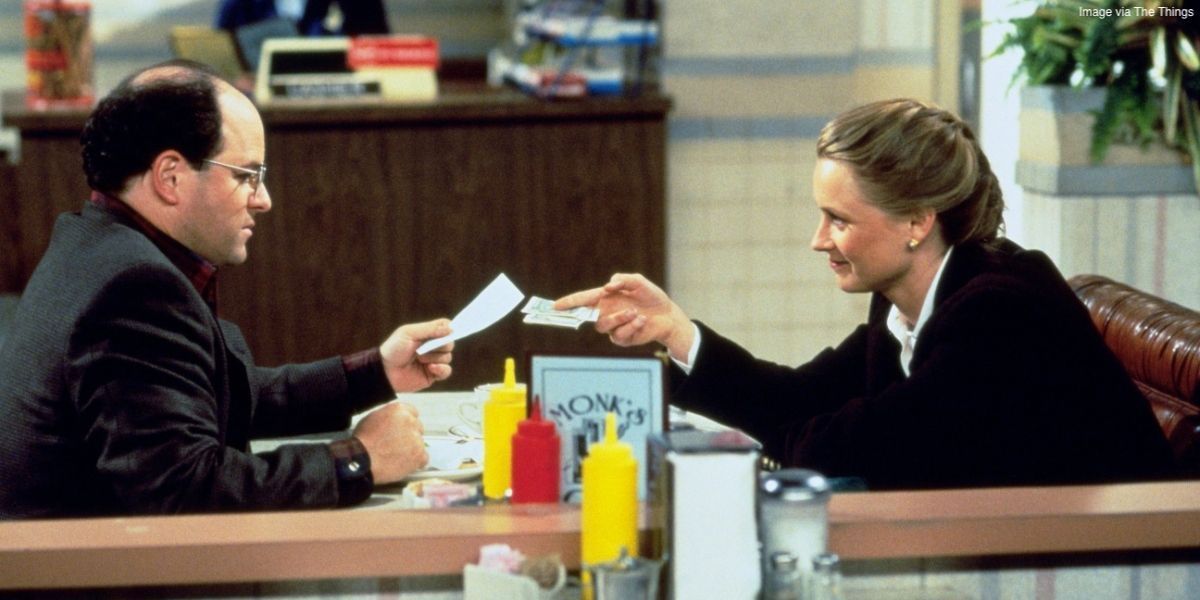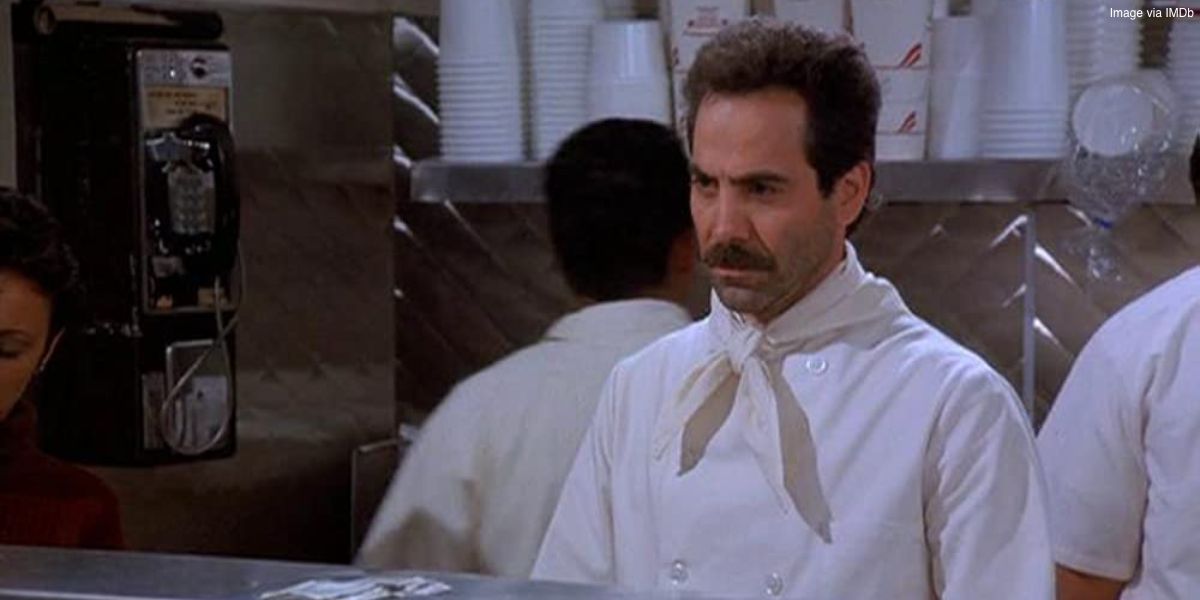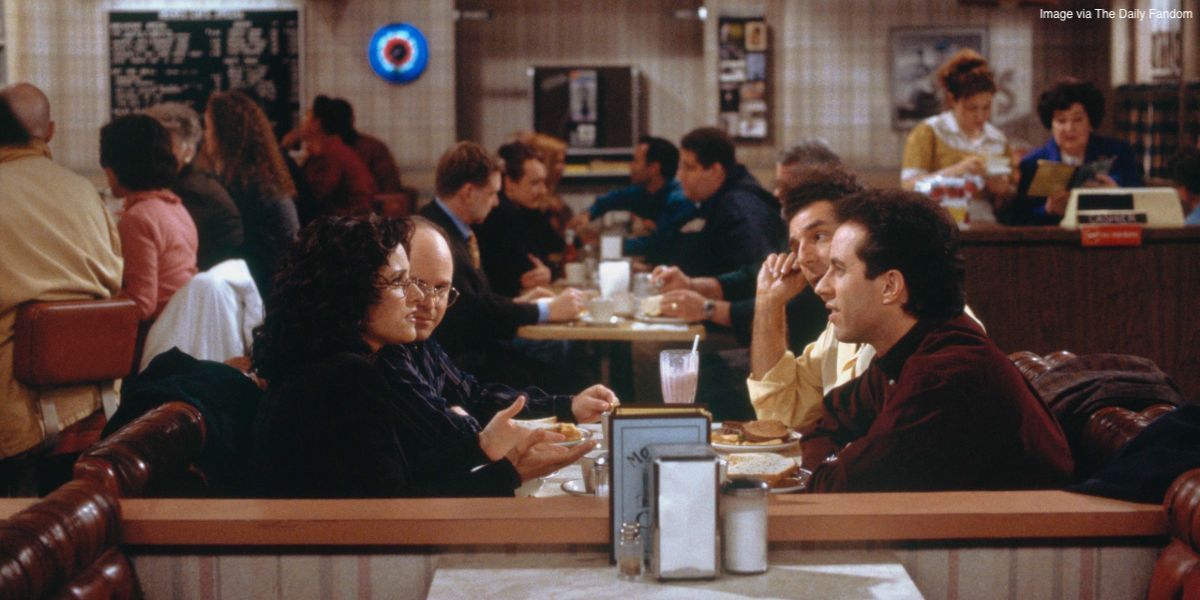Throughout its glorious nine seasons, Seinfeld has marked itself as one of America’s most beloved sitcoms and earned the reputation as a household name. Many might not be aware of the impact Seinfeld has had on television. The famous “show about nothing” changed our perception of what was acceptable as an enjoyable show and that rooting for the self-involved characters on the show is more relatable than you may think.
Seinfeld is widely regarded as one of the greatest and most influential sitcoms of all time. Many publications, such as The Washington Post and Entertainment Weekly, have included it in their list of the top television shows ever made. An estimated 76.3 million viewers watched the final episode of Seinfeld, which broke the record as the sixth-most-watched entertainment event of all time in 1998. Needless to say, Seinfeld has revolutionized television and become an important part of American culture.
Jerry's Puffy Shirt is in the National Museum of American History
In the fifth season's second episode, Kramer’s fashion designer girlfriend convinced Jerry to wear the famous white puffy shirt for his Today Show appearance, which caused him great embarrassment. The shirt has since become one of the most associated and memorable items from the show.
In honor of the show, Jerry Seinfeld donated the iconic costume piece to the Smithsonian in the National Museum of American History to be displayed alongside other pop culture artifacts such as Mr. Rogers’ sweater (from Mister Rogers’ Neighborhood) and the Sesame Street sign.
Julia Louis-Dreyfus Almost Didn’t Become the Leading Female Role in ‘Seinfeld’
It might be strange to imagine Seinfeld without Elaine Benes (Julia Louis-Dreyfus) because she is such an integral part of the show. Many might be surprised to learn that Louis-Dreyfus was not the original choice to be the female lead in the show.
The creators of Seinfeld had originally thought of going with Claire (Lee Garlington), the waitress from the pilot, to be the female lead instead.
The Opening Music Was Different For Every Episode
The opening music for Seinfeld is such an integral part of the show and is something that most viewers would not even think twice about when it comes on. While it may sound like they were all cut from the same track, music composer Jonathan Wolff admits that he made each of them individually because he would base them around Seinfeld’s monologue for the particular episode.
In an interview with Vice in 2015, Wolff shared that he “would build each monologue based on this list, this computer printout of his voice and what he was saying, how long it was,…It was a little bit more labor-intensive than most other shows because I had to redo that opening every time. But it was worth it. He was creating new material. As long as he’s creating new material, I’ll do the same thing, and I will create along with him.”
Jason Alexander Threatened to Leave the Show After Being Left Out of an Episode
Out of Seinfeld’s 172 episodes, there is only one in which Jason Alexander - who plays George Costanza - doesn’t appear in, an episode called “The Pen.” As Jerry Seinfeld is the only character on Seinfeld that has appeared on every single episode, it is understandable why Alexander panicked that being written out of one episode could mean he could be written out of the show entirely and permanently.
“If you do that again, do it permanently,” Alexander told Larry David in a 2013 interview with the Television Academy. “If you don't need me to be here every week ... I'd just as soon go back home.” Though some might consider Alexander’s reaction to be overly exaggerated, it was certainly effective because he has starred in every single Seinfeld episode since then.
The Real Costanza Sued Jerry Seinfeld and Larry David for $100 Million
Creators Larry David and Jerry Seinfeld have always maintained the fact that Alexander’s character, George Costanza, is based on David’s character himself. But Seinfeld’s former friend, Michael Costanza, sued Seinfeld, David, and NBC for $100 million because he claimed that his likeness was used in the show. Though the court still sided with Seinfeld and David, it didn’t stop Costanza from writing a book entitled The Real Seinfeld (As Told by the Real Costanza), claiming that he is the basis for the world-famous comedy character.
In his book, Costanza compared himself and George Costanza, noting that “George is bald. I am bald. George is stocky. I am stocky. George and I both went to Queens College with Jerry. George’s high-school teacher nicknamed him ‘Can’t stand ya.’ So did mine. George had a thing about bathrooms and parking spaces. So do I.”
Kenny Kramer Was Paid $1000 to Use His Name
Any true Seinfeld fan would notice that in the pilot episode of the show, Cosmo Kramer’s (Michael Richards) name was Kessler because Larry David’s real-life former neighbor, Kenny Kramer, was hesitant to let his name be used for the show. But eventually, according to ScreenRant, Kenny Kramer changed his mind and was only paid $1000 for using his name in the show.
But since then, Kramer has profited in other ways, such as with his Kramer’s Reality Tour, a bus tour that lets Seinfeld fans go around and look at various Seinfeld locations. Kramer’s Reality Tour is now in its 22nd year of running. David and Seinfeld even took inspiration from this and parodied it in one of the episodes of Seinfeld, where Cosmo Kramer tries to run a bus tour around the city (but to no avail).
Lawrence Tierney Was Supposed To Have An Ongoing Role
The actor Lawrence Tierney, who played the father of Elaine’s father, Alton Benes, was originally going to have a permanent role in the show. According to the cast, they decided to cut him out of the show due to his dangerous behavior on set. All the cast members on set felt uncomfortable when Tierney took a knife from the set and put it in his jacket.
When confronted about it, Tierney responded by saying he was trying to make a joke and be funny and then pulled the knife out of his jacket and imitated the infamous Psycho scene. Jason Alexander recalled looking at the director Tom Cherones and Julia Louis-Dreyfus and telling them, “…this is, we’re in the land of the sick now…, we’re in really scary territory.”
Susan Ross Was Deliberately Written Out Of The Show
The death of George’s fiancée Susan Ross (Heidi Swedberg), whose cause of death was from licking the poison glue from cheap envelopes, might have seemed abrupt and confused many Seinfeld viewers. Many years later, Jason Alexander finally revealed why this was the case: none of the cast members had comedic chemistry with Heidi Swedberg and always felt like their timings never matched. In an interview with The Hollywood Reporter, Alexander admitted, “I couldn’t figure out how to play off of her…,Her instincts for doing a scene, where the comedy was, and mine were always misfiring. And she would do something, and I would go, ‘OK, I see what she’s going to do — I’m going to adjust to her.’ And I’d adjust, and then it would change.”
Later, when Jerry Seinfeld and Julia Louis-Dreyfus shared a few scenes with Swedberg, they finally understood why Alexander had always struggled and complained about doing scenes with her. However, Alexander later clarified that he has nothing against the actress and was mad at himself “for retelling this story in any way that would diminish her” as that was never his intention.
The Soup Nazi Was Based On A Real Person
One of the most iconic characters from Seinfeld is undoubtedly the Soup Nazi. Many might find it hard to believe that any chef would act that way, but the Soup Nazi was based on a real soup chef, Al Yeganeh. In an interview with CNN, Yeganeh calls Seinfeld “a clown” and his use of “the N-word - the Nazi word - is disgraceful.”
When the CNN interviewer tells Yeganeh, “you’re famous because of him,” Yeganeh, instead, replied with “No. He got fame through me. I made him famous.” Yeganeh hates being associated with Seinfeld so much that he banned the comedian from his soup stall. That means no soup for you, Seinfeld!
“No hugging, No Learning” Policy
Larry David had one thing in mind when he and Jerry Seinfeld wrote the show: that they, as the creators and writers of the show, and the characters in it, had to maintain the “no hugging, no learning” motto throughout the whole run of the show. This policy meant they should avoid any sentimentality or situations that would indicate it was time for the characters to change or grow.
In an interview with The Atlantic, David expressed why he chose to do this, “A lot of people don't understand that Seinfeld is a dark show…,If you examine the premises, terrible things happen to people. They lose jobs; somebody breaks up with a stroke victim; somebody's told they need a nose job. That's my sensibility.”

